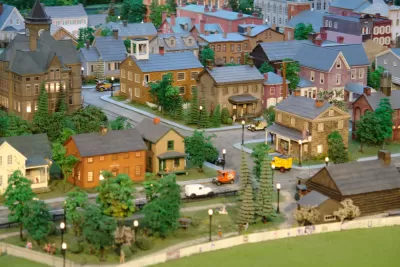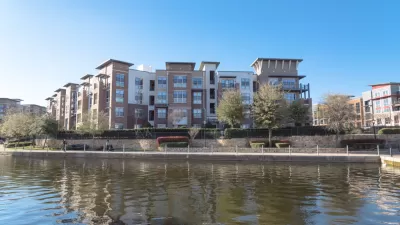The Pew Research Center digs into a question of definitions, fraught with exceptions and subjectivity.

Ruth Igielnik Wieder shares the results of a survey and analysis intended to determine more about the defining characteristics of urban, suburban, and rural communities in the United States.
As a new approach to the question of how to tell these types of communities apart, the team at the Pew Research Center took the additional step of surveying residents to compare public perception to outside sources of classification, two from the government and one based on ZIP codes. The government sources included 1) the National Center for Health Studies Urban-Rural Classification Scheme and 2) the U.S. Department of Agriculture Economic Research Service’s Rural-Urban Continuum County Classification. The ZIP Code measure included two factors: "the distance from the ZIP code to the center of the largest principal city in the nearest metro area (as measured by distance to the city hall) and the household density in the ZIP code."
According to Wilder, the comparisons between those three measures and the findings of the survey reveal a few patterns: "All three methods most accurately classified rural Americans and did less well with Americans in urban and suburban areas. And while all the measures performed relatively well overall, the decision tree most closely matched self-reports across all three community types."
As for which metric turned out to be the most useful, in the opinion of researchers: the self-reported assessment.
FULL STORY: Evaluating what makes a U.S. community urban, suburban or rural

Study: Maui’s Plan to Convert Vacation Rentals to Long-Term Housing Could Cause Nearly $1 Billion Economic Loss
The plan would reduce visitor accommodation by 25,% resulting in 1,900 jobs lost.

North Texas Transit Leaders Tout Benefits of TOD for Growing Region
At a summit focused on transit-oriented development, policymakers discussed how North Texas’ expanded light rail system can serve as a tool for economic growth.

Alabama: Trump Terminates Settlements for Black Communities Harmed By Raw Sewage
Trump deemed the landmark civil rights agreement “illegal DEI and environmental justice policy.”

How Community Science Connects People, Parks, and Biodiversity
Community science engages people of all backgrounds in documenting local biodiversity, strengthening connections to nature, and contributing to global efforts like the City Nature Challenge to build a more inclusive and resilient future.

Alabama: Trump Terminates Settlements for Black Communities Harmed By Raw Sewage
Trump deemed the landmark civil rights agreement “illegal DEI and environmental justice policy.”

Dear Tesla Driver: “It’s not You, It’s Him.”
Amidst a booming bumper sticker industry, one writer offers solace to those asking, “Does this car make me look fascist?”
Urban Design for Planners 1: Software Tools
This six-course series explores essential urban design concepts using open source software and equips planners with the tools they need to participate fully in the urban design process.
Planning for Universal Design
Learn the tools for implementing Universal Design in planning regulations.
City of Santa Clarita
Ascent Environmental
Institute for Housing and Urban Development Studies (IHS)
City of Grandview
Harvard GSD Executive Education
Toledo-Lucas County Plan Commissions
Salt Lake City
NYU Wagner Graduate School of Public Service



























